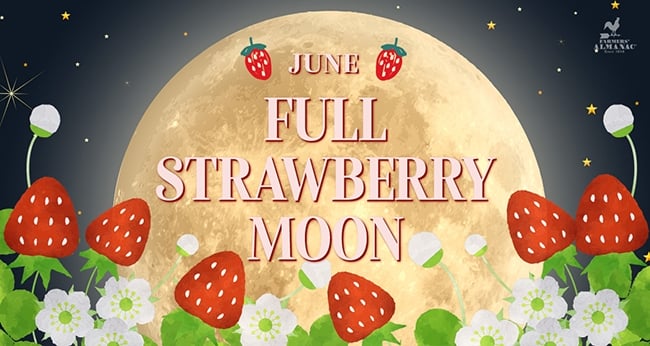What Happened
On the evening of June 10, 2025, the full moon, commonly referred to as the “Strawberry Moon,” rose over various locations, including Texas and New York. This particular full moon is notable for being the lowest full moon observed since 2006, a phenomenon attributed to a major lunar standstill. The full moon reached its peak illumination at 3:44 a.m. EDT (0744 GMT) on June 11, but it was expected to appear fully illuminated as it rose above the southeastern horizon at sunset on June 10. The Strawberry Moon is named for the time of year when strawberries are traditionally harvested, particularly in the northeastern United States.
The event attracted attention not only for its timing but also for its visual characteristics. Due to the moon’s position in its orbit, it appeared about 14% smaller and 30% dimmer than usual, classified as a “micromoon.” This effect occurs when the moon is at its farthest point from Earth, known as apogee. Additionally, atmospheric conditions can give the moon a yellow or orange hue when viewed near the horizon, enhancing its visual appeal.
Key Details
- Date of Full Moon: June 11, 2025 (peak illumination at 3:44 a.m. EDT).
- Best Viewing Time: June 10, 2025, at sunset, when the moon rises above the horizon.
- Significance: This full moon is the lowest observed in nearly two decades due to a major lunar standstill, which occurs every 18.6 years.
- Visual Characteristics: The moon appeared approximately 14% smaller and 30% dimmer than an average full moon, and it exhibited a yellow-orange tint when close to the horizon.
- Cultural Significance: Named the Strawberry Moon, it symbolizes the ripening of strawberries and is associated with various cultural and spiritual meanings.
Multiple Perspectives
The Strawberry Moon has garnered interest from both astronomy enthusiasts and those interested in its cultural significance. Astronomers highlight the unique orbital dynamics that contribute to the moon’s low appearance and its diminished brightness. According to sources like Space.com, the phenomenon of the moon appearing larger at moonrise—known as the “moon illusion”—adds to the visual spectacle.
Conversely, some cultural interpretations focus on the moon’s symbolism. The Strawberry Moon is seen as a time for reflection and celebration, representing growth and the fruits of labor. This perspective is supported by astrology experts who suggest that the moon’s position in Sagittarius during this event encourages exploration and new experiences.
However, not all sources agree on the moon’s visual characteristics. While many describe it as appearing yellow or orange, others emphasize that it does not take on a pink hue, despite its name. This discrepancy highlights the varying interpretations of both the moon’s appearance and its cultural significance.
Context & Background
The Strawberry Moon is part of a broader tradition of naming full moons based on seasonal events. This practice dates back to Native American tribes, who used the lunar calendar to track the changing seasons and agricultural cycles. The June full moon is particularly significant as it precedes the summer solstice, marking the longest day of the year in the Northern Hemisphere.
The current major lunar standstill is a rare occurrence, with the last one taking place in 2006 and the next not expected until 2043. This event affects the moon’s path across the sky, causing it to rise and set at more extreme angles. Such phenomena are of interest not only to astronomers but also to those who engage in cultural and spiritual practices tied to lunar phases.
What We Don’t Know Yet
While the Strawberry Moon has been observed and documented, there are still aspects that remain uncertain. For instance, the specific atmospheric conditions that will affect visibility can vary greatly by location, and predictions may not always align with actual observations. Additionally, the cultural interpretations of the moon’s significance can differ widely among various groups, and ongoing discussions about its spiritual implications continue to evolve.
Moreover, as this lunar event is part of a larger cycle, future occurrences of the Strawberry Moon and its associated phenomena will be monitored to better understand their impact on both natural and cultural contexts. The scientific community continues to study the effects of lunar cycles on Earth, including their influence on tides, wildlife behavior, and human activities.
In conclusion, the Strawberry Moon of June 2025 represents a convergence of astronomical phenomena and cultural significance, inviting both scientific inquiry and personal reflection as it illuminates the night sky.





